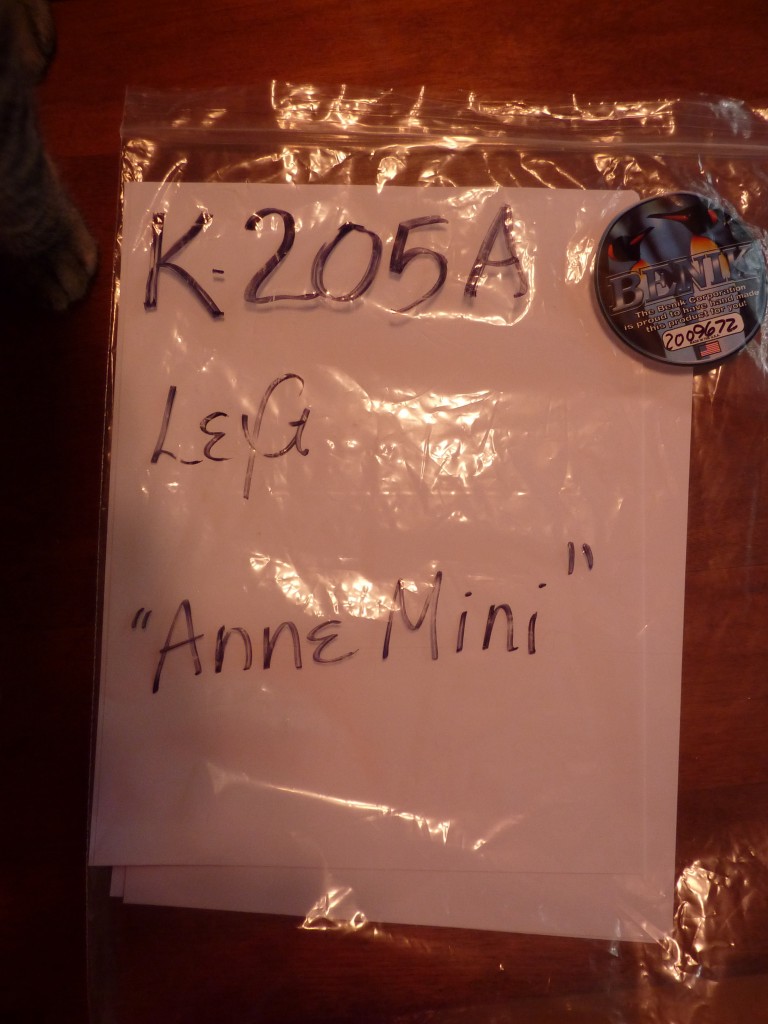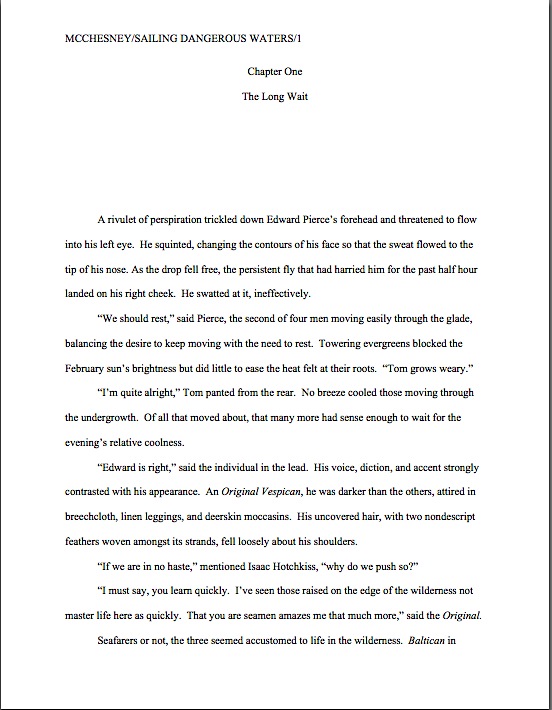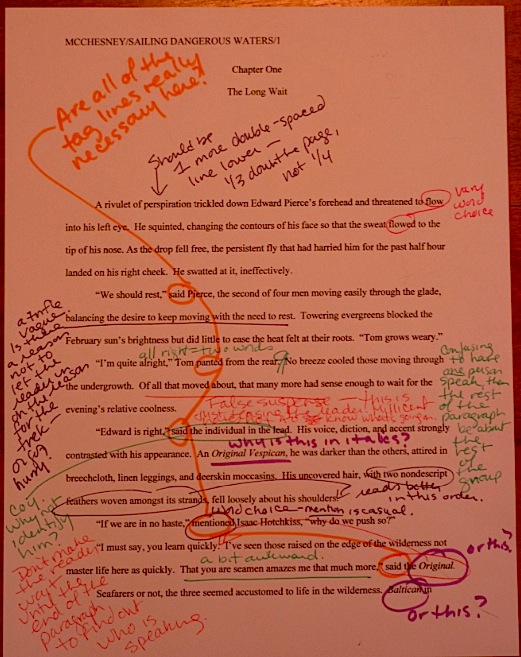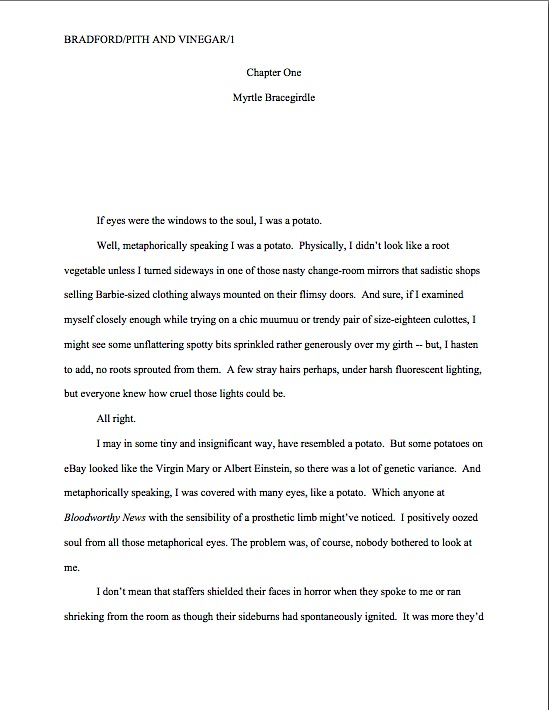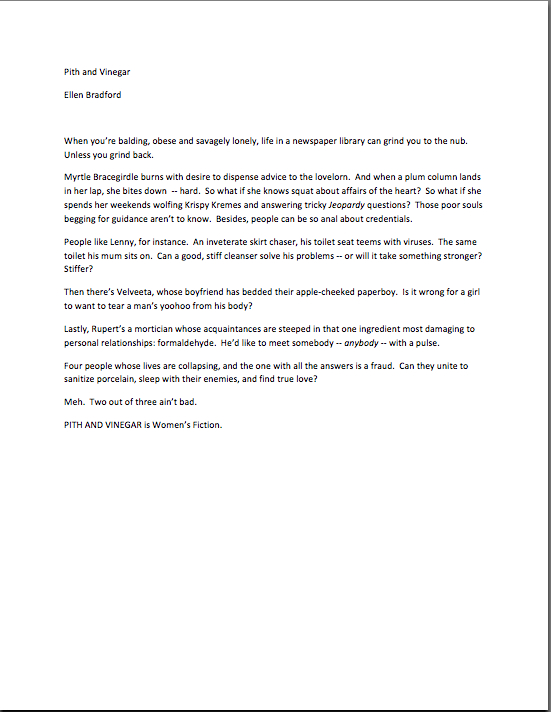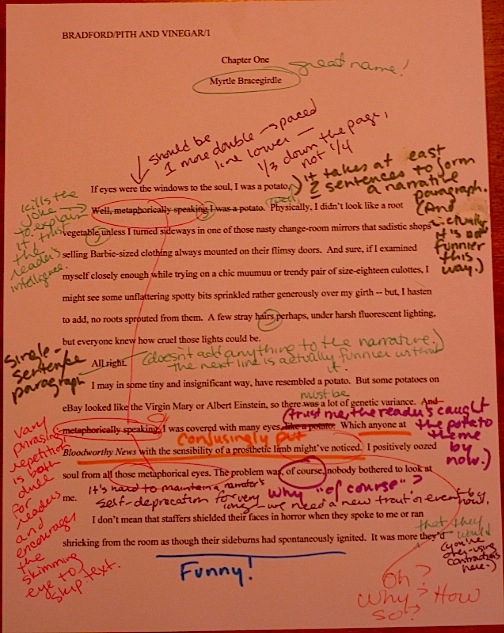I had planned to write more about comedy writing in contest entries today, campers, but a question from a reader gave me pause. Yes, I get questions from readers all the time (although, strangely, not on the current series on how to avoid common pitfalls in contest entries; I realize that many of you read Author! Author! on handheld devices, rendering posting a comment more difficult, but please remember, this is a blog, not a column; audience participation is an integral part of this community) without hitting the pause button on our ongoing discussions, but this one struck me as important to talk about as a community, for a couple of reasons.
I could just tell you what those reasons are, I suppose, but since publishers now routinely tell first-time authors they have just acquired to establish their own blogs, in order to ramp up their web presences, I thought it might be fun to give those of you planning on hitting the big time a little practice in comment-assessment. And, if you’re up for it, an unfettered discussion amongst ourselves about how writers — published, pre-published, and aspiring alike — feel about the relatively recent expectation that authors will invest significant amounts of time not only in writing their books, but in maintaining blogs, guest-blogging, social media-wrangling, and other online endeavors to promote their work.
Here’s the comment in question, posted today by repeat commenter Tony. If you, Famous Author of the Future, received this question from a reader — and you might: it’s not at all uncommon for fans to post writing questions on their favorite authors’ blogs — how would you respond?
RE: INDENTING THE PARAGRAPH’S FIRST CHAPTER.
Hi Anne.
Someone from the UK raised the point that indenting the first paragraph of a chapter is improper. She said “look at any published book you have–you’ll see.”
I looked. I was surprised to discover she appeared to be right. However, as I examined more books in my (quite extensive) collection, I see inconsistency.
Perhaps you could specifically address this issue in a future post?
Cheers,?
Tony
And no, in answer to what many of you just thought very loudly: Tony did not include a link to the discussion to which he was referring, probably (and politely) because he was aware that I ask commenters not to ask me to adjudicate disputes occurring on other writing blogs. (Thanks for that, Tony!) Nor did he indicate who the she is here, or what the significance of the geographical location is to this issue.
In short, Famous Author of the Future, you will have to assess this comment as any blogger would: based solely upon what it says and the relationship you hope to establish and maintain with your fans. How would you respond? Would you
(a) ignore it, since you were not writing an informational blog for writers?
(b) write a comment thanking Tony for posting, but also pointing out that you do not habitually give out advice about manuscript formatting?
(c) develop a one-size-fits-all response to copy and paste each time a reader asks a question like this, saying that you don’t have the time to answer this type of question?
(d) invest the time in doing a little research in where an aspiring writer might find the answer to a practical question about standard format, then post a link in the comment replying to Tony’s question?
(e) invest the research time, then e-mail Tony the link, so you will not encourage other readers to ask similar questions in your comments?
(f) pursue (e), then delete Tony’s comment, so other readers won’t think you pursued course (a)?
(g) bite the bullet and write the requested post? Or,
(h) write back immediately, “You know who answers arcane, practical questions like this all the time? Anne Mini — go ask her.”
There’s no right or wrong answer here, of course; I honestly want to know what you would do. Bloggers face this kind of dilemma every day — and the more successful a blogging author is, the more often she is likely to have to muddle through it. Responding to readers’ commentary is an essential part of blogging; it is — and stop me if this sounds familiar — the difference between writing a column and writing a blog.
For those of you whose answer was a shrug, I would urge you to reconsider. How to handle this is not an unimportant question, from a promotional perspective. Yes, Tony might be just one of your 21,362 adoring fans, but that doesn’t mean that you don’t need to be nice to him. If you’re not, he not only might not buy your next book — everyone he tells about your exchange might not buy it. And since the Internet offers so many opportunities for disgruntled fans to express their displeasure, even people neither you nor he know personally might well be influenced by what you do next.
Ah, now you are pale. That shows you are understanding the situation. Your future agent and editor will be so pleased that they will not have to explain it to you.
Now that we all understand how high the stakes are (and can be properly grateful to Tony for giving us the excuse to talk about those stakes), let’s consider the ramifications of each possible course of action. There’s no such thing as a completely safe choice here, after all. If you pursue…
(a) and ignore the question, well, you will be like a surprisingly high percentage of author-bloggers: they post what they have to say without glancing at the comments. That undoubtedly saves time, but you also run the risk of making a loyal blog reader and fan of your books feel as though you don’t care about your readers.
(b) and tell the commenter he has asked the question on the wrong kind of blog, you will be like many bloggers that habitually receive such questions. You also stand a very good chance of making someone who loves your writing and respects your opinion feel silly — and, if you don’t phrase it kindly, you could end up looking like kind of a jerk.
(c) and develop a one-size-fits-all response, you’ll be like many author-bloggers that have been at it for a while — and will almost certainly end up looking like a jerk who did not bother to read the question. Readers are smart; they know a canned reply when they see one.
(d) and invest the time in doing the research that, let’s face it, the commenter could have done himself, your fan will probably appreciate it, but you will have just done something that’s not your job for free — and demonstrated to other fans that you are willing to do it. Given that most Famous Authors of the Future will also have day jobs (you’d be astonished how often that’s the case now), is that a precedent you want to establish?
(e) and e-mail the commenter the link, you will still have donated your time to his learning curve, but you won’t get public credit for it. In fact, you will look to everyone else as though you pursued option (a). Your other readers will not enjoy the benefit of your efforts, so you may well end up answering the same questions this way over and over again.
Oh, and congratulations: you’ve just given a fan your e-mail address. Now that you two are on a friendly basis, there’s a better than even chance that the next time he has a question, he’ll just e-mail it to you, placing you in an even more intense version of the original dilemma.
(f) and be nice while deleting the original comment, you’ll get even less credit — and you’re even more likely to give the commenter the impression that you’ve formed a personal bond,
(g) and write the requested post, I can tell you now that other fans will see it and clamor for you to ask their questions. How do you think I got started writing an informational blog for writers?
Which is why I can point out the other risks here: in addition to being time-consuming (remember, you still have books to write), since so much of the formatting advice floating around out there for writers is just plain wrong, even if you post absolutely correct advice on your blog, some commenters will tell you that you are mistaken. That’s just the nature of blogging — and of being well-informed on a subject about which there is rampant speculation.
(h) and write back immediately, “You know who answers questions like this all the time? Anne Mini — go ask her,” well, you’ll be like a hefty percentage of writing conference presenters in this country. Commenters tell me all the time that other experts have sent them my way. And I appreciate that, especially when the suggestion comes with a link here.
As you may see, no option is cost-free — and all can potentially have ripple effects on your reputation. So again: what would you do?
While that intriguing question is rolling around in your brainpan, and before I move on to answering Tony’s question (I’m getting there, honest! I’m just trying to render the reply helpful to the broadest swathe of my readership), let me complicate our scenario. Let’s say that out of respect and love for your readership, you have fallen into the habit of giving authorial advice to those new to the game, at least in the comments section of your blog. Let’s further assume that you have answered the commenter’s specific question before.
Is your plan to respond to Tony’s question any different now? For most author-bloggers, it would be: it’s not at all unheard-of to see the same questions pop up in a blog’s comments month after month, or even year after year. (Oh, you thought your agent and editor wouldn’t want you to keep on blogging after your book had been out for a year or two?) And with a question like this, one that’s based on factual misinformation (sorry, Tony) posted by other authors, the more meticulously accurate the advice you post is, the more likely you are to receive comments that begin, Well, Other Famous Author of the Future says you’re wrong from fans who seem to be urging you and someone you have ever met to get into an entertaining brawl for their benefit. (Thanks again, Tony, for not including the link to the incorrect statement.)
So what are your options this time around? Off the top of my head, I would say that you could
(1) ignore the question, risking all of the negative outcomes of (a), above),
(2) write a comment peevishly telling the questioner that you’ve answered this question repeatedly, as a simple search of the site will demonstrate, despite the fact that this course exposes you to the risks of (b).
(3) if you formerly answered the question in a post, you could perform the requisite search of your blog, track down the link to that post, and include it in a comment, sucking quite a bit of time from your writing day,
(4) if you earlier answered the question in a comment (because, let’s face it, that’s what most commenters prefer; it’s typically speedier) and your comments section is not searchable (and most are not from the reader’s side of the blog), you could devote even more time to trying to track down that earlier response, then either post a link to the post on which it appeared or copy and paste what you said before. (Do I really need to point out how time-consuming that would be?)
(5) do the necessary research about where you now feel you should have sent everyone who has asked the question before — a site that specializes in such questions,
(6) Write a new response from scratch for the 15th time while you feel your blood pressure rise to the boiling point, or
(6) write back immediately, “I’d love to answer this, but you know whose website is stuffed to the gills with answers to questions like this, organized by topic? Anne Mini — go ask her.”
Again, no easy answers here. So what would you do?
I’m not saying that you should follow my example, but here’s what I did and the logic behind it. Tony asked the question in the comments of what I suspect was a post that he had bookmarked — and a good choice, too; it was an analysis of a former contest winner’s first page — rather than on the current post or in a post primarily about formatting. Why is that relevant? Well, while the post in question did discuss some standard format issues, it’s not a post that would turn up early in a site search (everybody sees that nifty little search engine in the upper right-hand corner of the blog, right?), so if I answered his question in the comments where he asked it, my reply would help only him. It’s a better use of my blogging time — and my readers’ reading time — to respond in a new post.
Why not just say, in the nicest way possible, that this is an issue I have addressed many times before, and he will find the answer in the posts under the HOW TO FORMAT A BOOK MANUSCRIPT heading in the extensive archive list located on the right-hand side of this page? For the same reason that I didn’t search the archives myself and post a link to a relevant post: one of the ways I learn how readers in a rush read the archive list, and thus how I figure out how to improve the category listings on it, is through questions like this.
How so? Because the first thing I did was check to see if there was already a category on the list addressing Tony’s question. And there was, generally. But I have learned from previous exchanges with commenters that not everyone has the time or the patience to run through a logically-applicable-but conceptually-larger group of posts in order to find the answer to a specific question. That’s why, in case you had been wondering, so many of the categories in my archives are expressed as questions: search engines have taught people to expect that answers to specific questions will be instantly accessible.
But Tony, charmingly, did not operate on that assumption, and I appreciate that. Apparently, he presumed that if the answer was not expressed as a question on the archive list, I had not ever blogged on the subject.
Actually, that’s not true, but I can see why he would think so. I can also see how any number of other readers searching for direct advice on this often-misreported issue might not have known which category would give them the answer in the quickest manner. Here, then, is the post he asked me to write — and I have created a new category on the archive list, so the Tonys of the future will be able to pull it up instantly.
That’s entirely appropriate, because it’s actually a very easy question to answer: published books and book manuscripts are not supposed to look alike. Traditional publishers do not print books directly from Word files; print files are quite different. Also, authors have virtually no say over how text appears in a published book; that is the publisher’s decision, just as the typeface is, and no formatting decision the writer makes in the manuscript will necessarily be reflected in its published version.
Therefore, just look at any published book cannot logically be a legitimate reply to ANY question about manuscript formatting.
So the problem here, Tony, was not that published books are inconsistent about this — and you’re right; they are — but that the person expressing the opinion was evidently unfamiliar with how standard format for books actually works. Manuscripts differ in many, many ways from published versions of the same text: they are double-spaced, for instance, contain doubled dashes, have one-inch margins, feature uniformly indented paragraphs, contain a slug line, are numbered in the slug line and not elsewhere on the page, and so forth. You’ll find a complete list of the rules here.
If any of that is news to anyone that pulled up this response while trying to answer the indentation question, I would urge you to consult the HOW TO FORMAT A BOOK MANUSCRIPT category on the archive list. You’ll find full explanations of the rules of standard format there. Honest.
Contrary to surprisingly pervasive belief in recent years, standard format — and, indeed, any formal writing in American English — requires that every paragraph be indented .5 inch. So why do we occasionally see published books in which the first paragraph of a chapter is not indented? Because that was a publisher’s decision to ape the style common in medieval manuscripts. You know:
Obviously, that’s not what agents and editors expect to see these days — and you wouldn’t believe any self-styled expert who claimed it was, right? Any publishing professional would reject this on sight: it’s hand-written. How they expect to see a chapter open is like this:
Does that clear things up, Tony? If not, please feel free to ask follow-up questions in the comments. This is now where future readers who share your concerns will look first for answers. They — and I — thank you for prompting me to make that happen.
What’s that those voices wafting back from the future are saying? They would like to see page 2, to compare it with a properly-formatted page 1? Happy to oblige.
That looks familiar, I hope. If you’re having trouble seeing the individual words of that thrilling saga, try holding down the COMMAND key and pressing + to enlarge the image.
Okay, now it’s your turn, Future Famous Authors. To be clear, I’m not inviting critique of how I handled Tony’s question: I want to know what your policy would be. Or is, if you’re already an author-blogger.
And, of course, if you want to sound off on the necessity of having to write material over and above your book in order to promote it, I’d like to hear your thoughts on the subject, too. Please don’t treat this post as a column, everyone, and keep up the good work!







